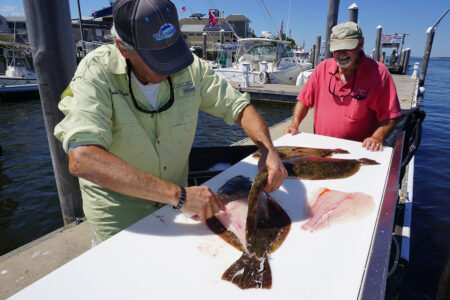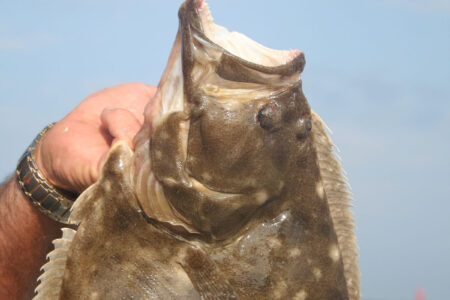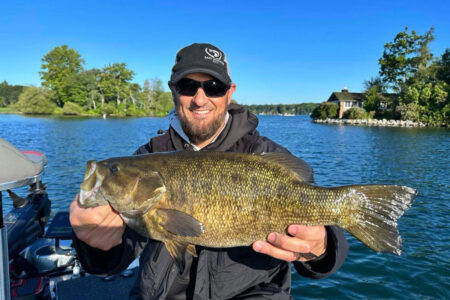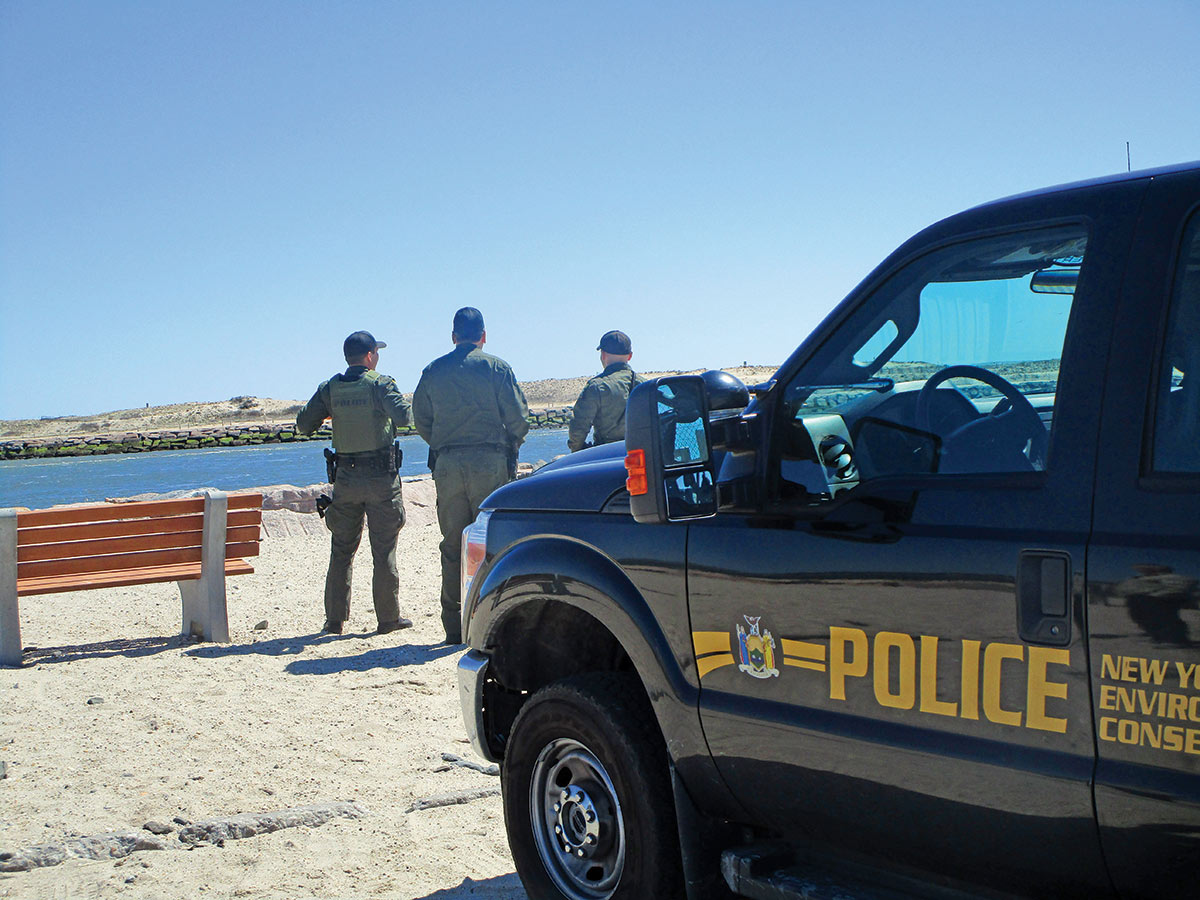
An inside look into the day to day activities of an Environmental Conservation Police Officer.
Roughly 1,400 square miles of land. More than 1,700 square miles of water. And that’s just for Long Island. Throw in New York City plus federal waters extending 200 miles out to sea and it adds up to one heck of a lot of territory.
Enter the New York State DEC and its Environmental Conservation Police Officers (ECOs) on whose shoulders fall the task of safeguarding the state’s natural resources and environment. With officers assigned to the Division of Marine Resources along with the men and women of Nassau and Suffolk’s four sectors and those in NYC they not only investigate complaints and enforce our laws, but they also perform numerous community outreach programs promoting fish and wildlife conservation. “Honestly, we want to be seen as constructive, preferring to educate rather than penalize. Nothing is better than meeting and interacting with fishermen, being able to share information and knowledge in a positive fashion,” said Lieutenant Sean Reilly during a recent meeting with him and two other ECOs, Officers Jordan Doroski and Ike Bobseine.
In conversation with these men, learning about what they do and why they do it, two issues were immediately evident, a love for the outdoors and a strong desire to make a difference. But in order to do this they first have to meet all of the educational and physical requirements and complete the standard training. On top of this, they then must undergo three additional weeks specific to the marine environment. And if that wasn’t enough, there’s also a month long Federal maritime training course available to them.
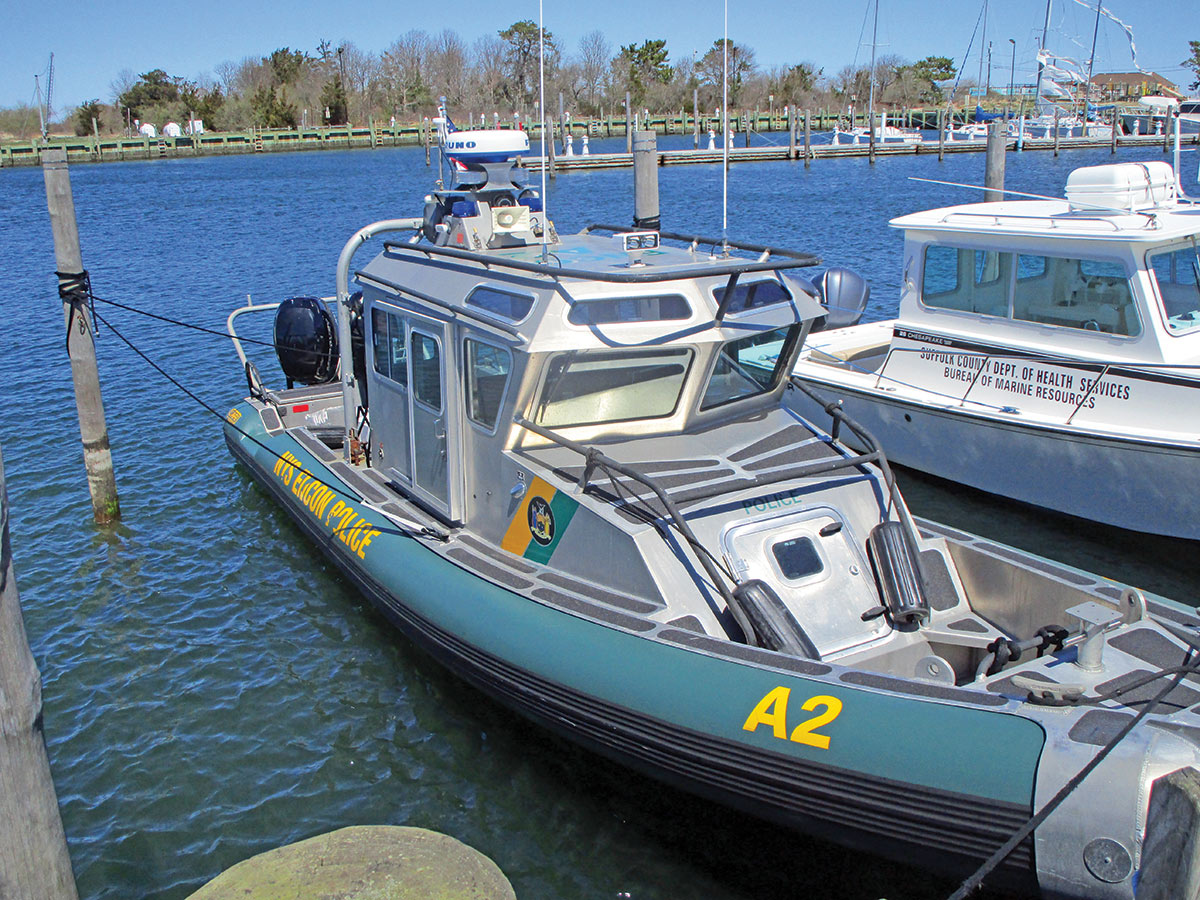
Once on the job, each officer is assigned a marked vehicle and works in conjunction with fellow brother and sister ECOs in the other sectors. Additionally equipped with unmarked cars, quads, and with access to a fleet of 15 boats they frequently work alongside other officers from county and town jurisdictions as well as those from neighboring states whenever an operation calls for it.
Relying on the public for tips and information they patrol not only the inland waters but offshore as well including New York’s 12 artificial reefs (two in LI Sound, two in the Great South Bay, and eight in the Atlantic), all spots favored by recreational fishermen and almost all of whom follow the rules. As for those who don’t, “Well, they may try to dump their catch when they see a patrol boat approaching, but they have another problem…Dead blackfish don’t sink and it’s pretty hard to plead ignorance when surrounded by a sea of floating fish,” said Officer Doroski.
On call twenty-four hours a day means each day can lead to a different venture into protecting the rights of not only recreational fishermen but legitimate commercial fishermen as well. Recently a commercial boat out of New Jersey was apprehended attempting to offload 600 pounds of fluke in Freeport after having already transferred about 1,500 pounds to another boat. (Side note: And, as this article was being written stripers exploded in the western sound and a total of 85 illegal fish were seized.)
However, being on call does not mean these officers are restricted solely to the confines of marine issues. Officer Bobseine arrived late to our meeting having been detained by an early morning call-out to apprehend a turkey poacher, successfully catching him with three young hens just as the axe was about to fall. “Every day is different and much depends on the weather and atmospheric conditions,” explained Lt. Reilly. “Officers know an area, what’s happening, and will target areas specific to that time. For example, April and a new moon equals elvers and alewives as a season progresses. At other times,” he went on, “we may team up and head down to the ocean, relying on each other’s most recent information as to where to go and what equipment to use. And that frequently includes working with a bay constable or the Coast Guard to increase our effectiveness.”
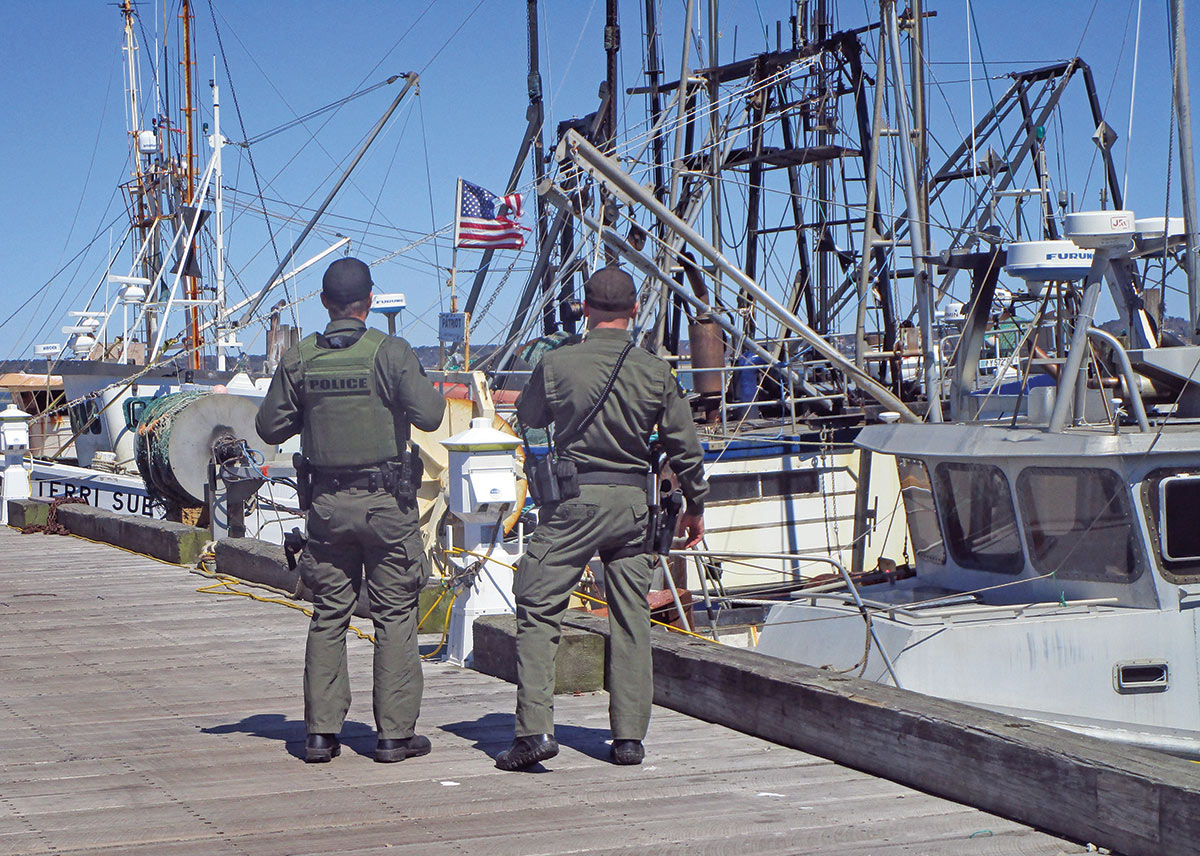
One of the more serious issues ECOs encounter is un-permitted commercial activity. These are the true poachers, harvesting and attempting to sell 40 stripers or 250 blackfish. Here the impact is not only to the detriment of the species but on the legitimate commercial fishermen as the sudden unloading to local restaurants and markets drives down the economic value of a legal catch. “The difficulty lies in being in the right place at the right time,” said ECO Doroski.
“Exactly. It’s frustrating when you can’t get to where you want to be because of safety issues. Poachers are most problematic when weather is a factor. They may feel that if the weather’s bad enough, we may not be out there patrolling. They’re wrong!” added Reilly.
“And then there are nights,” it was Bobseine speaking now, “when the weather is fine and you’ll drive up and come upon eight or nine all working together and they’ll all scatter in different directions.” The degree and ease which these men seamlessly incorporated their responses was full testament to what a solid team they are. Not individuals but a fully cohesive unit.
And while policing or enforcement may seem like the primary goal, it is not. Yes, the men and women of the department are sworn police officers, but they differ from the normal concept in that, as their title states, they are conservation officers. They are out there striving for a productive interaction by working for the benefit of people who recreate, who wish to enjoy the outdoors, and who want to pass this on to generations yet to come.
When asked what their favorite part of the job was, one of the men offered, “Seeing something survive to reproduce,” and offered in evidence the time he was part of a seven-man team whose combined efforts involved lifting a stranded dolphin and then spending an hour resuscitating it. Another spoke of, “Teaching 7- to 12-year-olds how to fish during a snapper derby and sharing with them the difference between legal and ethical. Yes, you can legally keep what you catch, but when you get home are you going to eat it or throw it in the garbage?” The third ECO took it even a step further, “Having young kids get excited and successful. It’s their enthusiasm that will make them future ambassadors of the sport.”
There is one matter, however, where they could use assistance, and that is in the area that’s become today’s mantra: “If you see something, say something.” Waiting to report it the next day is of minimal value as those who have no regard are long since gone. But a single call 24/7 to 631-444-0250 can be rerouted very rapidly to an officer who might be near enough to be dispatched. And, if you are lucky enough to run into one of the ECOs on the beach or while out on the water be sure to wave and say hello. They just might be the best source of information on where the fish are.
| VISIT THE DEC WEBSITE: www.dec.ny.gov |
|---|
| Under the Recreation drop down menu you will find access to valuable information about Freshwater Fishing, Marine Fishing and Shellfishing, Boating and Paddling, Links to public access to Marine waterways – points of contact where you can obtain information about boat ramps, fishing piers, and public beaches for fishing. A list of fishing access sites for anglers including those with disabilities. Use the search feature on your phone for ny dec reef map and the first item to pop up will be the DEC’s link to their reef web page. Scroll down for the link to the Artificial Reef Interactive Map. You now have access to your favorite reef, including location coordinates, size, depth and construction materials. |

